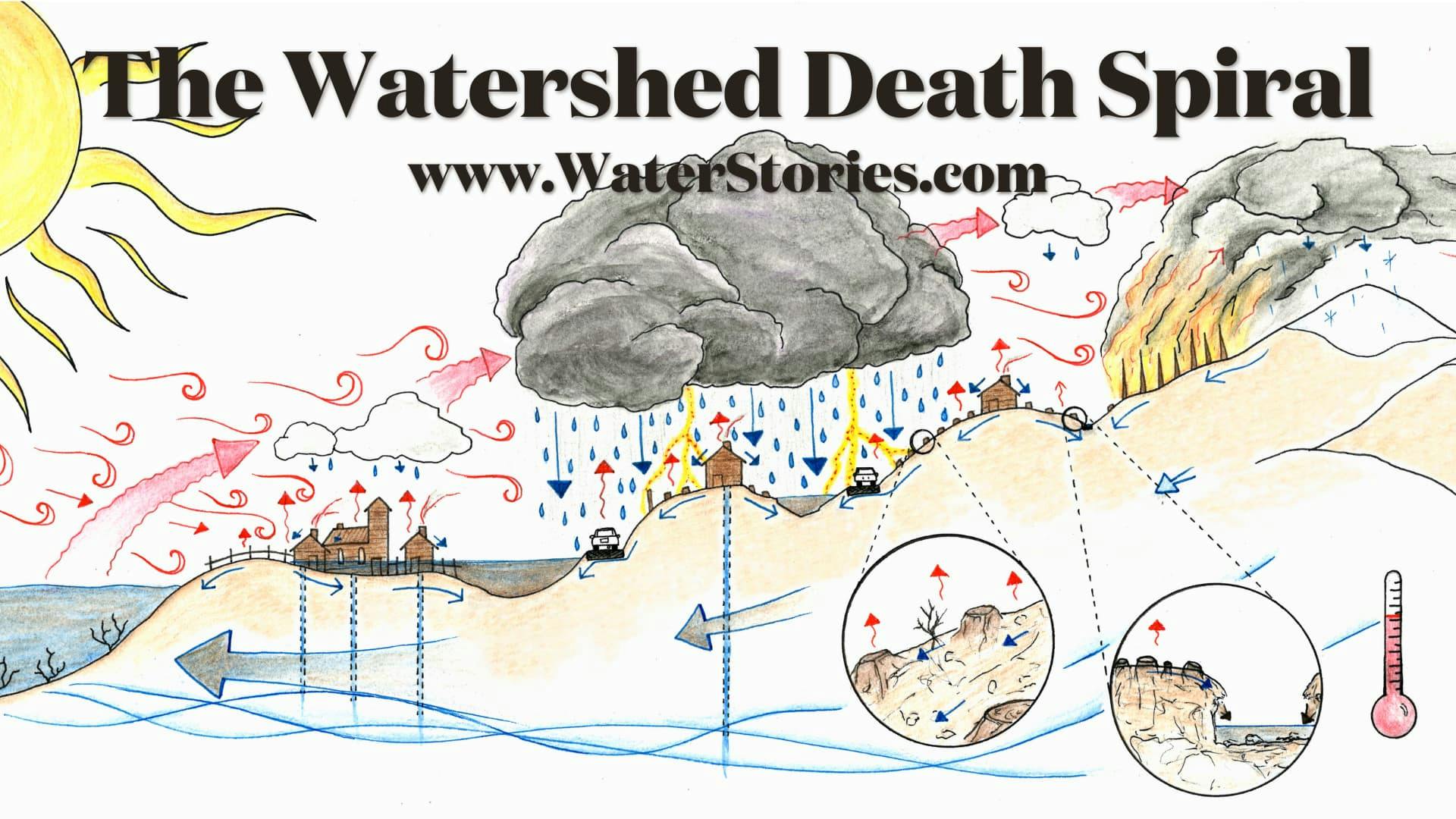Animation
The Watershed Death Spiral
How We Got Here...
Human activity has disturbed the Full Water Cycle, resulting in the increasingly common and severe Flood, Drought, and Fire we are experiencing; as well as rising global temperatures and extreme climate.

The Destruction of Earth’s Hydrology
The desecration of Earth’s organs was not intentional, but rather the product of unintended consequences as civilization advanced. Forests were clear-cut, wetlands drained, and vast landscapes plowed. Rivers and waterways were dredged to make passage for boats and transport; in the process lowering the water level of the whole landscape. Levies were built and waterways disconnected from their floodplains, no longer able to deliver moisture and fertility seasonally to the surrounding lands. Hard surfaces (roads and buildings) and degraded, exposed soils severely reduced infiltration, creating even more runoff. Then, as water sources went dry, extracting groundwater - the last remaining reserves of fresh water. Earth’s landscapes were transformed from rich forests and expansive wetlands to the wastelands and deserts we see today.
The Costs and Consequences
Without space to go, the water rushes quickly downstream, resulting in flooding and erosion. Even more tragically, the life-giving force of water never has a chance to infiltrate into the earth. The landscape now quickly runs out of water, photosynthetic cooling stops, and droughts become severe. Columns of hot air rise off the bare earth, resulting in rising temperatures and high pressure heat domes. The heat domes resist the inflow of cool moist air from the coast and cause the pressure to build. Eventually the storm is powerful enough to overcome, and its force is destructive. The parched landscape is unable to absorb the intense downpour. Crops begin to fail, stress and competition increase, and wildlife populations dwindle. Eventually desert is all that remains from once fertile land.
Impact on Climate
The resulting impact on Earth’s climate is catastrophic; stronger, more severe storms, with longer periods of drought in between. The water vapor in the atmosphere, that would have previously fallen in the evening as rain, instead forms a warming haze, preventing heat from dissipating into the night sky. Temperatures rise as the impacts intensify, leading to long term drought and water scarcity. Under the stress of the extended drought, the landscapes are unable to resist fire. There is nothing “natural” about the disasters we are experiencing, they are the direct result of previous water management.
Impact on Planetary Health
What is the result for the health of our planet? The water tables sink, making water increasingly scarce and reducing quality. Springs and creeks go dry, and the rivers and waterways begin to die. Huge landscapes burn, as rich land is transformed to desert. Temperatures rise and the climate becomes increasingly extreme and erratic.
Feedback Loop
The Watershed Death Spiral is a feedback loop, the drier landscapes become, the less life they support. The lifeless landscapes are unable to effectively regulate temperature and humidity. As a result the biome desertifies - making life harder for all of Earth’s inhabitants.
These effects and impacts build on one another, the further down the spiral we go the harder it becomes to reverse. But there is another feedback loop, working to rehydrate the lands and restore the waters, that we can move towards - The Revived Water Cycle.